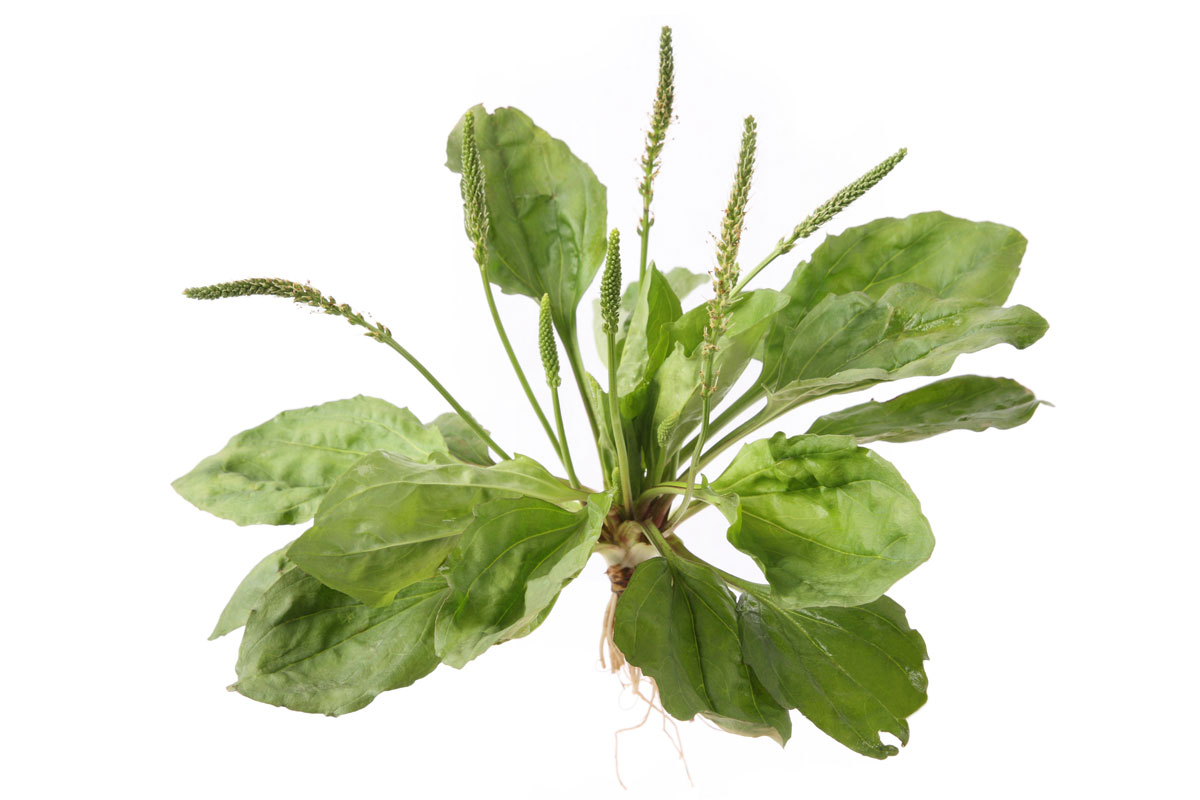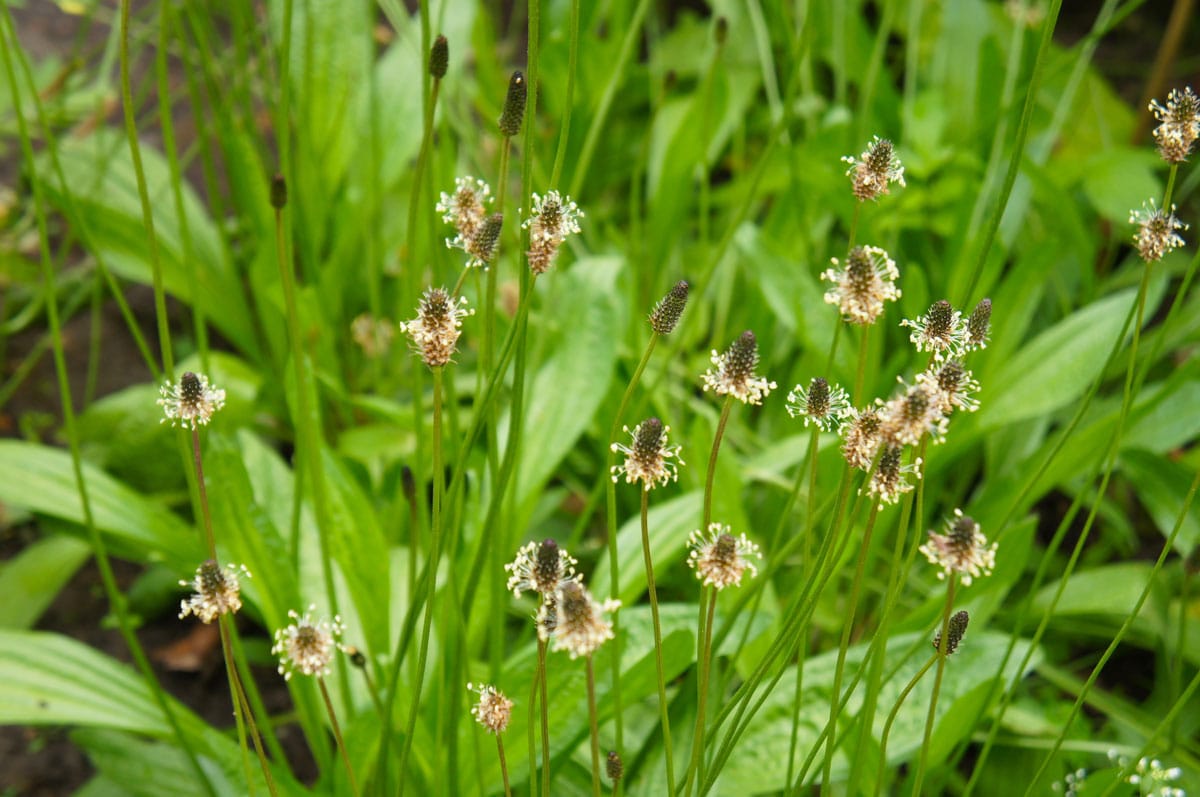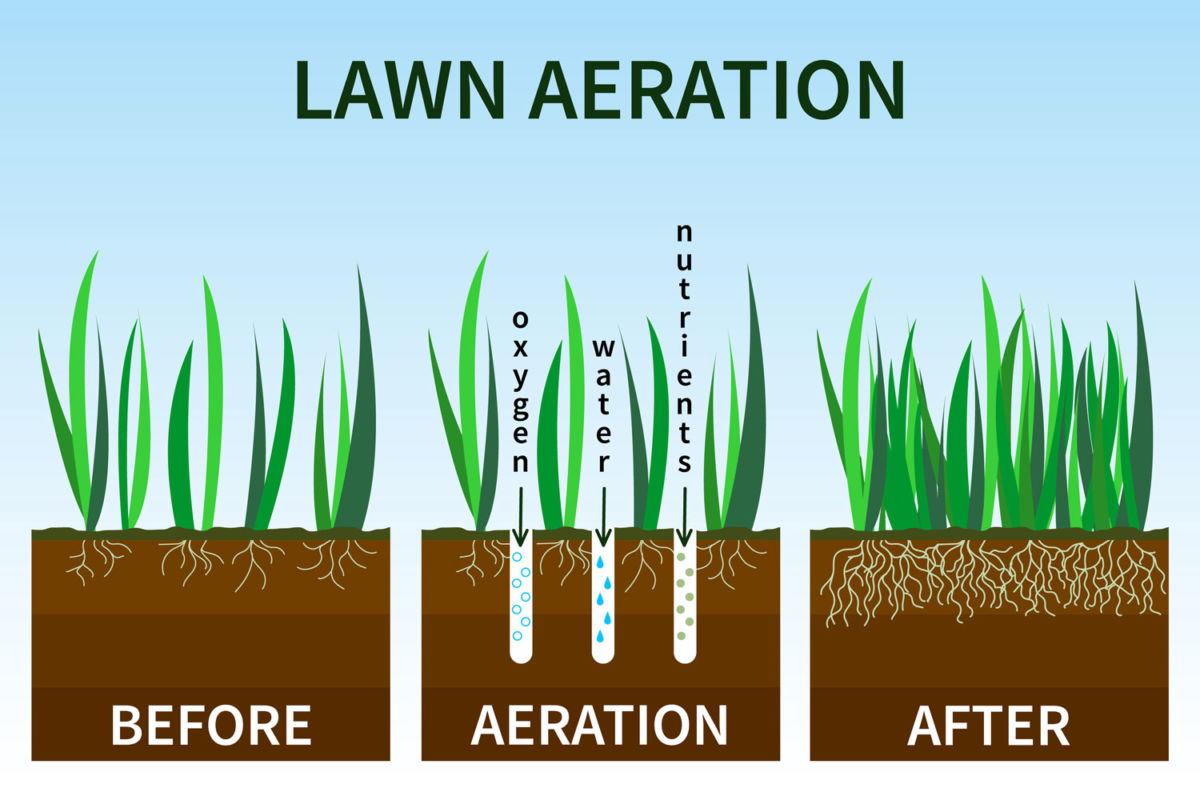Plantain may seem like a lawn weed to you, but there’s more to this plant than meets the eye. Here are 6 things you need to know about Ribwort Plantain.
- The scientific name for Ribwort Plantain is Plantago lancelata. Plantago comes from the latin word meaning sole of the foot. Native Americans called this plant ‘white mans foot’ because it was often found growing on well trodden paths.

2. This plant has different shaped leaves according to where it is growing. In meadows and hedgerows it has long, upright leaves. In lawns it has rounded leaves that lie flat to the ground. A clever way of protecting itself from the mower.
3. Plantain leaves are a larval food plant for Painted Lady and Glanville Fritillery butterflies. The seedbeds are enjoyed by Goldfinches in autumn and winter.
4. That brown knobbly flower head is edible. Apparently it tastes like mushrooms.
5. You can use Ribwort Plantain seed heads for a fun game. Cut them off with as long a stem as possible and play ‘conkers’ with them by bashing your seed head against your opponents. First stem to snap off is the loser.
6. This nondescript little wildflower has a whole host of medicinal uses. It has antihistamine, anti fungal, antioxidant, analgesic and mild antibiotic properties. Rub a plantain leaf against a nettle sting or an insect bite and it will feel better in no time. I’m told that Tea made from the leaves is an excellent cough medicine. I haven’t tested that theory yet, but I’ll definitely remember it for future use.
What is Ribwort Plantain?

Left unmown, Ribwort Plantain can grow to around 30cm high
Ribwort Plantain is a commonly occurring wildflower that you’ll see growing all over the UK. In lanes, hedgerows, road verges, meadows and yes, lawns. It’s a fairly plain looking plant with a distinctive flower head that you would never mistake for any other plant. Flower stems pop up from the rosette of leaves and at the top of each stem is a brown knobbly structure surrounded by a halo of white stamens. Viewed from above the flower looks like a crown.
The leaves have distinct ridges running from their tips to their stem. Hence the name ‘Ribwort”. The word ‘Wort’ in the name usually refers to beneficial plants. Eg lungwort and woundwort. The opposite of wort is weed. Eg knotweed or bindweed)
If you have plantain in your lawn, you’ll most likely see a tight rosette or wide leaves that really hug the ground. It seems as though this plant has adapted itself to avoid being chopped up by the mower. Even if you don’t like the plant, you’ve got to admire its tenacity.
Should You Tolerate Plantains In Your Lawn?
Every body has a different idea of what makes the perfect lawn. Some of us like a bit of biodiversity, other people prefer their lawn to be just grasses. I have to admit, that although I’m impressed by ribwort plantain’s contribution to the ecosystem, to herbal medicine and to children’s games, I don’t like seeing it in my lawn. Whilst clover almost blends in with short grasses, Plantain sticks out like a sore thumb. And when the lawn turns golden in the heat of summer, the plantains shine out like bright green beacons.
But here’s the thing. Every ‘weed’ growing in your lawn tells you something about the conditions you are trying to grow grass in. Clover tells you that the soil could do with a little more nitrogen. Moss indicates that your lawn is poorly drained, shaded or both. Plantain tells you that the soil beneath your lawn might be compacted.
Take another look at number one of the 6 things you need to know about the plantains in your lawn. Native Americans refer to plantain as ‘white mans foot’ because it grows on well used paths and tracks. It seems then as though this plant is happy on compacted soil. Certainly, it is shallow rooted and the roots tend to spread outwards rather than try to head down into the soil the way a dandelion tap root does.
In theory then, if you don’t want plantains in your lawn, it figures that you might be able to discourage it by managing your soil.

Regular lawn aeration relieves compaction and helps to discourage plantains from growing in your lawn
How To Get Rid Of Plantains In Your Lawn
The number one rule for controlling plantains, is not to let them get established in the first place. Regular aeration, will create growth conditions that favour grass, not plantains. And keeping your lawn well fed will ensure a thick sward where unwanted plants find it hard to find enough space to grown.
If you already have plantains growing in your lawn, simply dig them up. They have a shallow root system and are not hard to remove with a trowel. Of course you could use chemical controls – but as you know, those are a last resort for me. I’m not a fan of using herbicides unless I absolutely have no choice. And even then, I’ll spot treat weeds rather than blanket spraying an area.
This video will show you how to achieve and maintain a weed-free lawn
You might also like some of these articles about managing weeds in your lawn
Lawn weeds tell me what your lawn needs – find out how identifying the weeds in your lawn could help you manage the soil and sward so that unwanted plants never get established.
Clover in lawns – should it stay or should it go?

